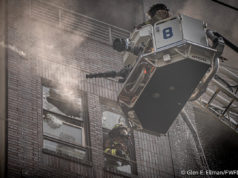The history of alcohol production has a lot of interesting stories associated with it. They run the gamut from how distillation and fermentation brought on sweeping changes in agriculture, to all of the anecdotes about how sauced Winston Churchill was while commanding British forces during World War II. These all make for fascinating and typically funny reads, but I don’t think that most people are familiar with a few stories that I’ve dug up over the years involving booze production and small scale disasters. The following is a synopsis of three outrageous incidents involving booze floods.
The London Beer Flood of 1814
On October 17, 1814 in St. Giles, London, England a tank containing 610,000 liters of beer ruptured at the Meux and Company Brewery. The flood then knocked over every other tank in the brewery, instantly doubling the total volume of this disaster. The tidal wave burst through the brewery walls and carried its chaos onto the streets destroying two homes and crushing a pub. Ultimately it took the lives of eight people as a result of drowning or injuries sustained from trying to navigate an unforgiving river of beer.
The Great Molasses Flood of 1919
In the late 1800’s and on up until the beginning of prohibition, New England was big into the rum business. Sticky, sweet molasses from the Caribbean was shipped up the Eastern seaboard and offloaded into large tanks to later be fermented and distilled. This sounds like a pretty innocuous way to start this story until you consider that in the year 1919, Boston ran across an unseasonably hot streak in January. After about a week of temperatures in the 70s and 80s a 2.5 million gallon tank of molasses at The Purity Distilling Company began to ferment. The carbon dioxide that was released during fermentation built up pressure inside the tank, and shortly after noon on January 19, the tank exploded sending a 15-foot-high wall of molasses hurling down the street at about 30 mph. Many times in my life I’ve considered the possible circumstances of the moment when I finally shake off this mortal coil, but I’ve never thought that it would be suffocating in a wall of molasses in January. Some 21 people met their sticky fate that day, and I’m sure that wherever they ended up in the afterlife they had some serious questions to ask.
The Wild Turkey Warehouse Fire of 2000
The staff at The Wild Turkey Distillery in Lawrenceburg, KY is still a little sensitive about talking about this event. On May 9, three employees of the distillery heard an explosion out by the warehouses and went to investigate. By the time they arrived they saw that one wall of a warehouse had been blown apart and less than three minutes later they watched as the burning warehouse collapsed in flames. To put in perspective the significance of one of these warehouses catching on fire I would like to point out that they typically contained pretty much nothing other than barrels made of wood and about 1.1 million gallons of barrel-proof whiskey. That’s the flammability equivalent of firing up a cigarette while pumping gas at 110 gas stations simultaneously. The only option that the fire department had to control this blaze was to hose down the surrounding buildings with fire retardant chemicals and wait around for the blaze to burn out. Eventually the burning barrels began to split open and a river of flaming whiskey proceeded to travel down the path of least resistance into the Kentucky River where, by some accounts, it set the river on fire for a two-mile stretch. It eventually caught fire to a forest behind a water treatment facility before the inferno could be quelled. Residents of the town claim that their tap water was coming out the faucet at about 10-proof for the next month. No humans died as a result of this event, but Wild Turkey was fined $1000 for every fish that the EPA found dead as a result.
I’m not sure I can say “At least we can all laugh about it now”, but I hope you at least found this read interesting. That concludes this weeks episode of “Weird Booze Floods”.












